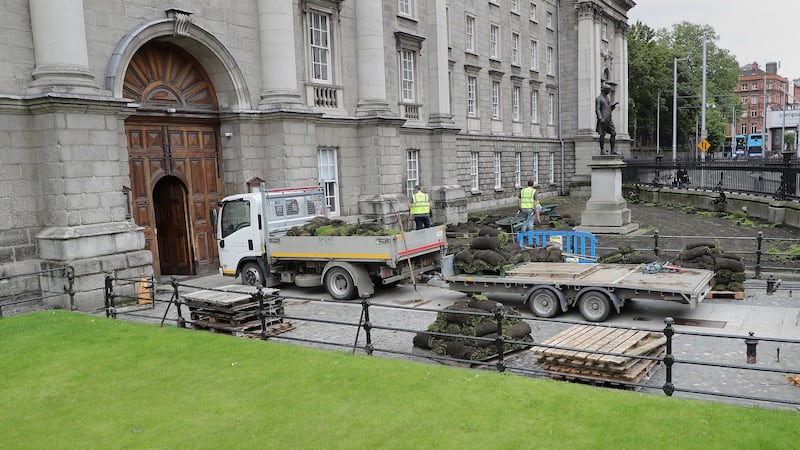The manicured lawns at the front entrance at Trinity College Dublin have been removed and are about to be transformed into a wildflower meadow in response to Ireland's "biodiversity crisis".
First announced in February, the move which make islands of the famous twin statues of Edmund Burke and Oliver Goldsmith, brings to an end to 150 years of grass cutting, which made the lawns at the front of the college as smooth as a cricket pitch.
The conversion into a bee-friendly, wild-flower meadow began in recent days after the public overwhelmingly backed the move in an online poll in April.
Of almost 14,000 votes, 12,500 were in favour of replanting the front of the university which faces onto College Green.
Prof John Parnell, chair of Trinity's grounds and gardens committee, said the results sent a message that "people want to see more biodiversity and in particular want institutions to set an example".
Though the area may end up looking less tidy, supporters of the idea say it will be an important reminder of what wild nature looks like.

Research shows lawn-mowing, ground preparation and pesticide control can disturb important insects that feed and nest in the soil.
Planting wild flowers and minimising interference supports biodiversity, and provide a habitat for native insects and food for pollinators in the city centre.
The plants will a mix of annuals and perennials, with as many of them being of known Irish origin as possible. The aim was to extend flowering over as long a period as possible.
The area will flower in spring and summer, and be left untouched over the winter months when pollinator insects – such as butterflies, hoverflies and bees – hibernate.
The re-wilding move represents a pioneering attempt in Ireland to place wild-flower spaces in the heart of the city. The area – one of the most prominent areas in the capital – sees thousands people pass by on a daily basis.
Plants and grasses at other parts of campus are already in the form of mini meadows and cut only a few times a year to encourage wild species and to assist students and academics studying ecology.










